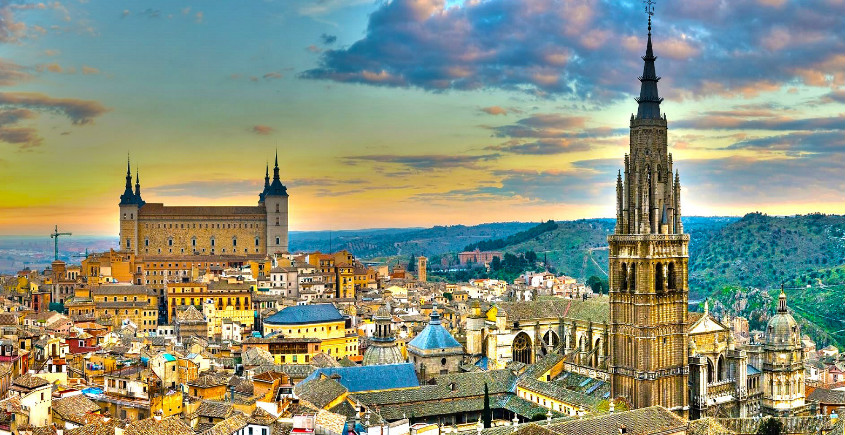FRANCE
Paris is known throughout the world as the "City of Lights," Paris is celebrated for its beautiful city plan, its architecture, museums, bridges, cathedrals, parks, shopping, flea markets, sidewalk cafés, wide and luxurious boulevards, elegant cuisine, and numerous monuments notably the immaculate Eiffel tower, symbol of France. An island in the middle of the Seine River, the Ile de la Cité, Paris founded more than 2,000 years ago, quickly spread to both banks of the river.
Disneyland Paris is a must-visit, and is just 35 minutes from Paris. The theme park opened in 1992 in Marne-la-Vallée, and is the most visited attraction of its kind in Europe. Built by The Walt Disney Company. The entertainment behemoth boasts no fewer than 52 attractions on a 55-hectare site.
SPAIN
Barcelona
In 410 AD, after sacking Rome the Germanic Visigoths swept into Spain, renaming the city from Catalunya to Barcelona and making it their capital between 531 and 554 until they moved to Toledo. The Visigoth kingdom came to an end in 711 with the Moorish invasion from Africa and Catalunya was briefly overrun until defeated beyond the Pyrenees by the Franks in 732. Barcelona acted as the focal point for the exchange of scholar and scientific knowledge between the European and Muslim worlds and the arts flourished under the great patronage. Foreign trade saw to it that shipbuilding and conquest were established.
Madrid
It is now commonly believed that the original name of the settlement here was Matrice, a pre-Muslim word, which refers to the waters of the area and particularly to the stream running down the Calle de Segovia. Since then Madrid's urban progress has accelerated to reach, today, the level of one of Europe's most beautiful capital cities - pleasing both for its intense animated spirit and its suitable mix of modern and classical appearance.
PORTUGAL
Porto
The Historic Centre of Oporto or Porto is a commercial port that has been looking to the west for its trade for over 1000 years. The nominated area is enclosed within the 14th century city walls. The city is situated along the river Douro, which has three impressive bridges (one of these, the Ponte de Doña Maria Pia, was built in 1877 by Gustave Eiffel). One of the most impressive buildings is the Torre dos Clerigos, the highest tower in Portugal measuring 76 meters. It was built between 1754 and 1763, under supervision of the architect Nicolau Nazoni. You can climb the granite tower via 200 steps.
Lisbon
The age of discovery, from the 15th to the 18th century, marked the Enchanted Port as the main departure point of the Portuguese discovery expeditions. Explorers sailed from this city in the entire world, discovering new lands in South America, Africa, and Vasco De Gama was the first European to link Europe to Asia founded the first sea route to India This made Portugal one of the ruling nations of Europe, while Lisbon was Europe’s most prosperous trading center.


